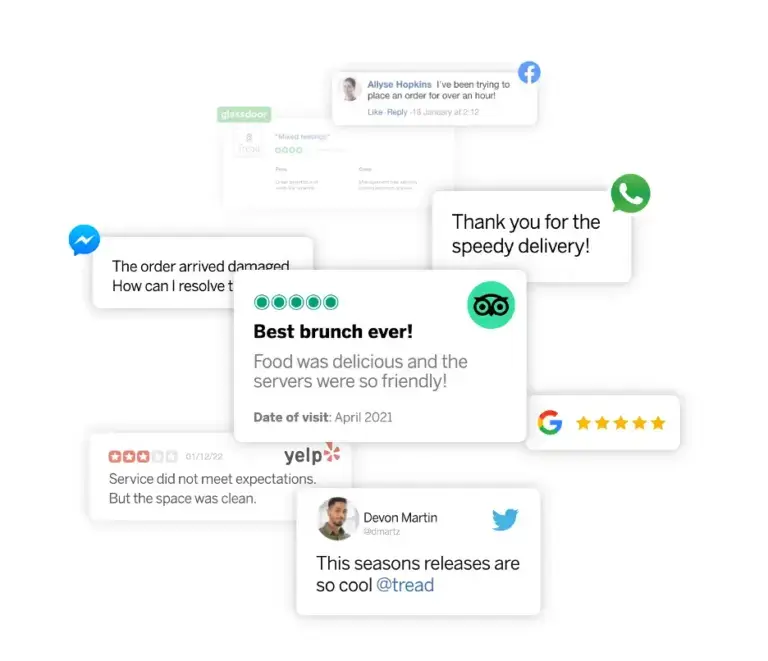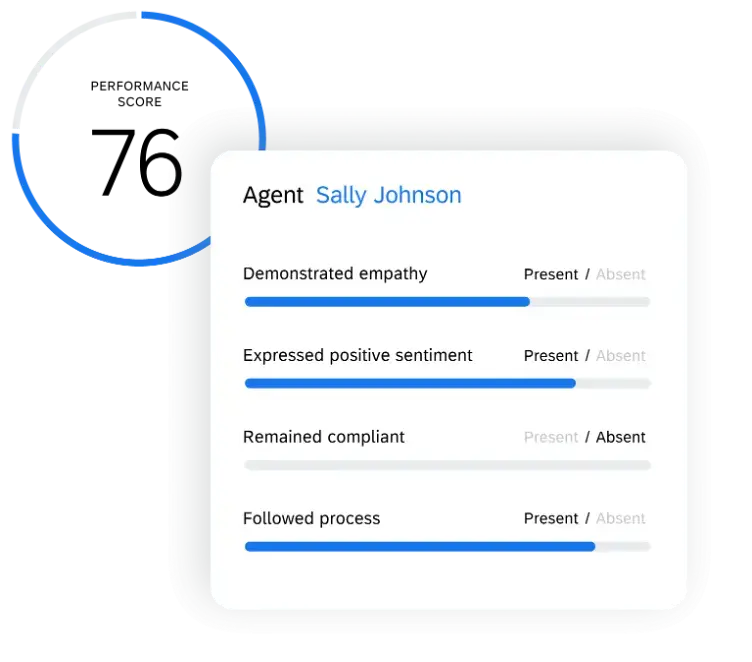Author: Adam Bunker
Subject Matter Expert: Dave Pabley
Defining interaction analytics
Interaction analytics is the term used to describe turning the qualitative, unstructured data of customer interactions into quantitative metrics that can be measured in definite terms. The benefit here is in learning what’s working and where things need to improve.
Every time a customer interacts with your business – on any channel – they’re providing you with a wealth of information about how your business and its customer service operates. But the onus is on businesses to tap into that raw data and make use of it to inform proactive change.
A customer support phone call, for example, is much more than just an opportunity to fix an issue or solve a query – it’s also your chance to capture data that can indicate common product or service issues, identify agent coaching opportunities, and surface customer journeys that need fine-tuning.

When you pay attention to your interaction analytics, you’re really asking a few key questions:
- What are my customers saying, thinking, and feeling?
- Where do common issues lie?
- Are they being served to the best of our ability?
- How can our customer experience improve?
Interaction analytics require customer experience software packages that can understand human language, monitor a huge volume of conversations in real time, and collate information from every touchpoint.
Tune in to every word, on every channel with Frontline Care
What’s the benefit of interaction analytics?
To understand the benefit here we need to think about the goal. When you track interaction analytics you’re really looking for parts of the end-to-end customer experience that can be improved upon. And, while the benefits of improving CX should be obvious, there’s a huge amount of research that shows just how important it is in today’s consumer environment.
A lot of that importance comes from your customers themselves. According to PwC, some 73% say that CX is now the main thing influencing consumer purchasing decisions, while 86% will happily pay more for top-tier customer experience.
Scratch that itch, and customers will not only stick around, but they’ll also tell people to do the same. If you can solve a customer’s issue quickly, they’re 2.4 times more likely to stay loyal. If you can provide a great experience, they’ll tell six people about it on average. Fail to meet their expectations, though, and they’ll tell 15.
Why should businesses care?
Conversations are gold mines of information about your customers and their perception of your organization.
While traditional surveys are sampled and often biased, leveraging interaction analytics to evaluate phone conversations, social media exchanges, or live chats reveals the holistic, actual voice of the customer. Taking advantage of the treasure trove of unsolicited feedback within contact centres empowers organizations to make more informed decisions more quickly, saving time, money, and headaches.

Crucially, those informed decisions will improve your overall customer experience, which will only boost customer satisfaction and retention – and help drive down churn.
That’s important because customers won’t always tell you what they think.
In fact, research shows that for every customer who complains, a further 25 will go to a competitor without saying a word. You’ll feel that negatively in your bottom line, but the opposite is true when every part of the customer experience is firing on all cylinders – companies that put a strong focus on CX can see as much as an 80% increase in revenue.
How does interaction analytics work?
Customer interactions with your business happen on a host of channels – owned and third-party, directly and indirectly. That encompasses everything from calls coming into your contact center, to posts on social media channels and even reviews on third-party aggregators.
The role of customer interaction analytics is to monitor all these conversations and talking points, collate them, and assign qualitative and quantitative values to them. For most businesses, the scale of that task rules out manual tracking. Instead, the answer lies in software imbued with AI and natural language processing features.
Analyzing conversations
With a computational ear to the ground, you’ll be able to soak up every signal and figure out what people are really saying. But, more importantly, the right interactions analytics suite will also be able to tell you why.
Using natural language processing, these tools analyze the content and context of conversations to attach three core values:
Effort
Customer effort measures how much effort a customer has to exert to get an issue resolved, a request fulfilled, a product purchased/returned, or a question answered. If, for example, a customer mentions that they’ve had to contact you several times in order to get an issue resolved, your natural language processing software will understand that they’ve had to exert a lot of effort.

Emotion
Customer emotion is a measure of how customers feel about their experience. Writing a glowing review obviously denotes a very different set of emotions from making an angry complaint over the phone. Understanding customer emotions can help with long-term trend tracking as well as in-the-moment responses to live conversations.
Intent
In the customer experience and service space, ‘intent’ can mean much more than just the reason for a call or chat. Detecting consumer intent helps you understand and classify what a customer is trying to communicate beyond what they are saying or talking about – whether it’s a cry for help, a question about a feature, or a heartfelt thanks.
Those three verticals can tell you a lot about each individual customer’s experience, but they become really powerful when combined into a larger snapshot of how things are currently going.
Any interactions analytics suite worth its salt will also know if, for example, a specific topic comes up often across touchpoints. And that’s where the real ‘intelligence’ part of the AI offering comes to the fore.
Trendspotting
Let’s imagine that your customer interaction analytics suite monitors 100,000 interactions in a quarter. That’s a lot of information – much more than a human could pore over. The job of the software here is to turn that massive amount of raw data into usable insight. Often, that’ll come in the form of emerging patterns and trends.
Those trends are powerful because they point to common issues that need to be addressed – issues that might be missed if you’re not monitoring interactions at scale.
If, for example, your analytics suite flags that a higher-than-average number of customers are having an issue logging into your software, checking out on your website, or that there’s a specific fault with a physical item, then that information can be flagged quickly and relayed to the relevant teams to fix the problem.
Agent prompts
Interaction analytics can also help agents in real-time. If you’re using a suite that monitors and understands conversations as they happen – like Qualtrics’ Frontline Care software – then it can use that insight to help agents on calls by delivering prompts, relevant resources, and customer history.
Quality management
Interaction analytics are also a great addition to any contact center quality management program. By listening to every call – not just a sample – these tools can help intelligently score each interaction, evaluating service quality and mitigating risk. That includes agent scoring against values like issue resolution, knowledge, and script compliance.
Even better, our contact centre solution can even proactively identify opportunities for agent coaching, and schedule sessions automatically.

Customer experience analytics metrics
Conversations, social media posts and reviews make for inherently unstructured, qualitative data. Luckily, the analytics tools we’ve been describing are great at transforming that raw data into meaningful, trackable information.
As a result, you’ll be looking at a range of industry-standard CX metrics that you can work towards improving over time, including:
Customer Effort Score (CES)
Customer Effort Score evaluates the ease of a customer’s experience, tracking how much effort they had to put in to resolve an issue or complete a task.
Customer sentiment
Merticising customer sentiment – whether they feel positively or negatively towards you – allows you to track people’s general perception of your brand over time.
First response time
The time it takes for a customer’s initial inquiry or request to receive a response from a company’s support team.
Average Handle Time (AHT)
The average time it takes for customer interactions to be resolved, including both the time spent interacting with the customer and any follow-up work.
Resolution rate
Measures the percentage of customer issues or inquiries that are successfully resolved within a specific timeframe.
Script compliance
How closely your agents are sticking to the script while on calls or live chats. Going off-script can be necessary in some instances, but it’s best to keep your messaging as consistent as possible.
Social media mentions/share of voice
The number of times your company is mentioned on social media platforms – both as an absolute and in relation to your competitors. This is a good indicator of brand awareness and sentiment.
Using interaction analytics to your advantage
Whether you’re trying to spot common customer issues, improve your in-house customer support, or simply understand what’s being said about your brand, using customer interaction analytics to the fullest means acting on what you learn.
Improvement here is a journey, rather than a one-and-done action. It’s about monitoring each interaction across every touchpoint, understanding each metric, and then making changes that can help close experience gaps and improve customer sentiment. Over time, you should see positive changes – and new metrics that you can benchmark against.
Tune in to every word, on every channel with Frontline Care